Garden or balcony furniture is an essential part of your outdoor living spaces, and this investment needs to be chosen carefully. As ICA Home & Garden, we have been representing variety and quality in garden furniture in Turkey since 1990. In this article, we will discuss the advantages and disadvantages of different garden or balcony furniture materials that our customers ask us about, helping you choose the most suitable one for your needs.
Rattan
Rattan is a tropical plant species used to create weaves in garden furniture. It is a type of palm native to Asia. Rattan should not be confused with other organic materials like bamboo. While rattan is a solid vine, bamboo has a hollow form. Therefore, they are widely used in garden furniture. For more information about rattan and rattan garden furniture, you can read our blog post.
Wooden Materials
Wooden furniture is a frequently preferred option for gardens and balconies. Wooden materials provide a natural and warm appearance while also being durable. First, we will discuss teak wood, one of the materials whose properties are most often inquired about in outdoor furniture.
Teak Wood
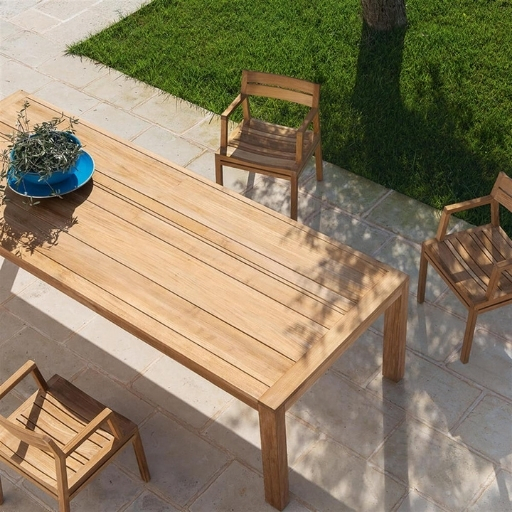
This dicotyledonous tree species of Southeast Asian origin is one of the most valuable wooden materials used in outdoor furniture. This tree species is extremely resistant to weather conditions thanks to its incredible durability and naturally oily properties, and offers a lifespan of up to 50 years.
Teak wood is an extremely durable material that can withstand outdoor conditions for many years. Compared to other wood types, it cracks less, doesn't bend or break. Teak is highly resistant to water and sun thanks to its naturally high oil content. These oils prevent the wood from absorbing water and reduce the possibility of rotting. It is also resistant to UV rays and resistant to color fading.
The warm color tone and natural texture of teak wood give your garden an elegant and stylish look. When left untreated, teak furniture can develop a beautiful silver-gray color palette over time, but still maintains its aesthetic appeal even in this state.
Many outdoor furniture brands have collections using teak materials. Especially Kayu Teak's models represent the natural beauty of teak wood.
However, teak furniture requires periodic oiling to maintain its natural color. You can easily obtain the necessary oils for the maintenance of your teak furniture via icashop.com.tr.
Shorea Wood
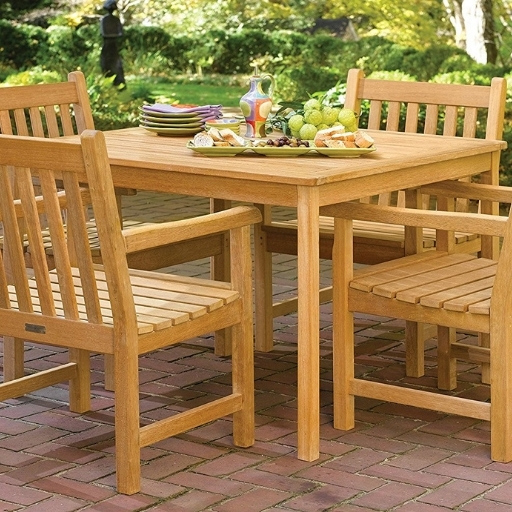
Shorea wood is a stronger and heavier wood of Southeast Asian origin than teak wood. It can be hardened and strengthened by being exposed to heat during the production process. Like teak trees, it has a high oil content, making it resistant to rot, resistant to insects such as woodworms, and resistant to damage from sunlight. Although it is a material that should be preferred in garden furniture, very few brands use this wood in production due to its high cost and limited availability.
Iroko Wood
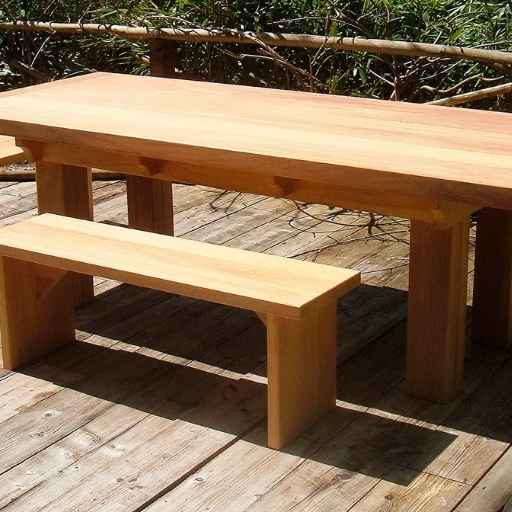
Iroko wood, also known as African teak, is a type of wood frequently used in garden furniture production. Known for its high durability, this material ensures garden furniture lasts for a long time and is an ideal choice for outdoor use. Iroko wood is resistant to weather conditions and humidity changes and is also resistant to rotting. It has colors ranging from brown to golden yellow and can have unique patterns. Therefore, furniture made from Iroko wood adds elegance to any indoor or outdoor space.
Iroko wood has different areas of use besides garden furniture. It is particularly preferred in interior applications such as flooring, veneering, stair steps, and decorative accessories.
Regular maintenance is recommended to protect garden furniture made with this wood. The wooden surface can be coated with wood protective oil or varnish.
Acacia Wood
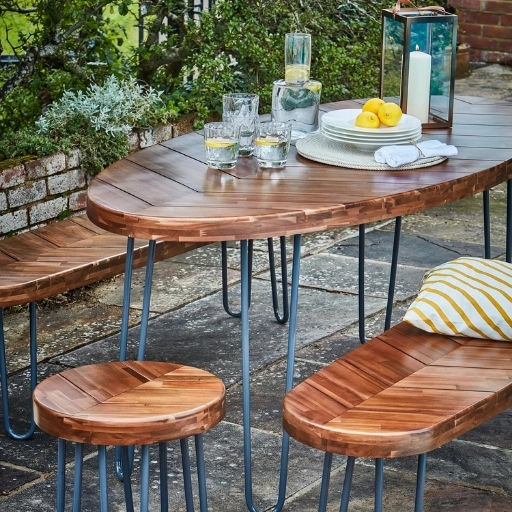
Acacia wood is a popular choice for wooden furniture. It is a naturally durable and hard type of wood. It is resistant to weather conditions and resistant to rot. It can beautify any indoor or outdoor space with the unique color tones and patterns of the wood.
Acacia wood is a preferred material for wooden furniture with its durability, aesthetics, affordable cost, easy workability, and eco-friendly properties. It can be used for garden furniture, indoor furniture, or other decorative products.
Eucalyptus
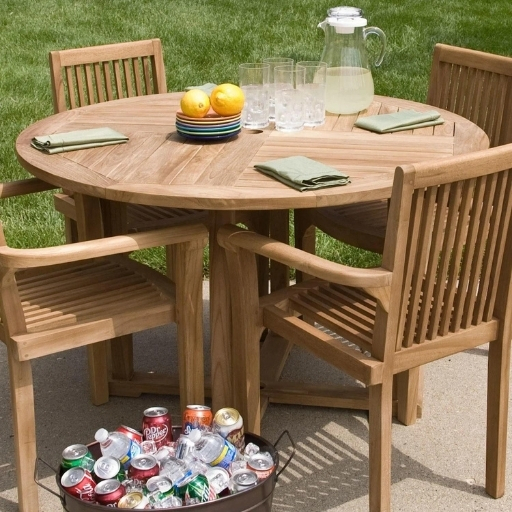
Eucalyptus wood is preferred in garden furniture due to its light and hard texture. Also, it is a long-lasting option thanks to the natural resistance of eucalyptus wood against rot. In terms of color, it contains a naturally attractive brightness and warmth. Eucalyptus wood is known for its strong and durable structure. It is an ideal choice for outdoor furniture as it is resistant to weather conditions. It also has a natural resistance to insects and rot, which provides long-term use.
The fast growth feature of this tree provides an advantage for sustainable forest management. This tree species contributes to the conservation of other forest resources while also providing resources to the wood industry. Therefore, it is considered an environmentally friendly option.
The oil obtained from the leaves of the eucalyptus tree has antibacterial properties. Therefore, wooden products of eucalyptus wood can naturally prevent bacterial formation and provide a hygienic living space.
Eucalyptus wood is a preferred material in wooden furniture and building materials with its aesthetic visuals, durability, sustainability, various usage areas, and bactericidal properties. This tree species is an excellent choice for beautifying our homes and creating a healthier living space with its natural beauty and functionality.
Metal Materials
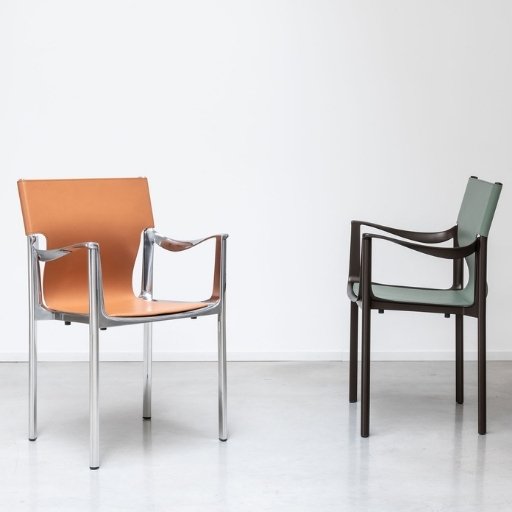
Metal is mostly preferred as the strongest and most durable material for garden furniture. Thanks to its durability, metal frames can be made thinner than other options, which gives manufacturers more design flexibility. Metal also produces excellent results when combined with other materials with functional and aesthetic properties. Using different production techniques, metal chairs and tables can be produced without the need for additional connections such as screws or bolts. However, metal has some disadvantages. For example, it can heat up in the sun and be uncomfortable when touched. Also, some metals can be heavy and difficult to carry, and all metals are susceptible to rusting and corrosion to some extent. However, each metal type has its own unique properties.
Stainless Steel
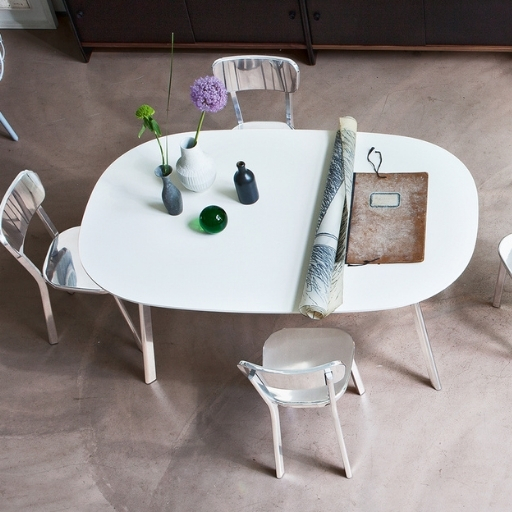
Stainless steel is the most robust option among garden furniture materials. It offers high strength, especially when used in garden tables and garden sofa sets. Notches do not form thanks to its hard and smooth structure. It absorbs heat less than other metal types and is more resistant to rusting. Additionally, the higher the chrome content of the steel material, the more resistant it is to rusting.
Since stainless steel is heavier than other materials, garden furniture produced with this material does not tip over or fly away in windy weather. They are especially preferred in modern style furniture due to their bright silver color, and they are easier to clean than other materials.
Aluminum

Aluminum is the most widely used metal type in garden furniture. This metal, which provides both strength and lightness to garden furniture at the same time, can be easily processed in many different models. It is also resistant to rusting. Manufacturers can increase this rust resistance with solutions such as polyester powder coating. We recommend that you prefer manufacturers who use these coatings when choosing garden furniture. Aluminum, like other metals, absorbs a lot of sunlight.
Wrought Iron
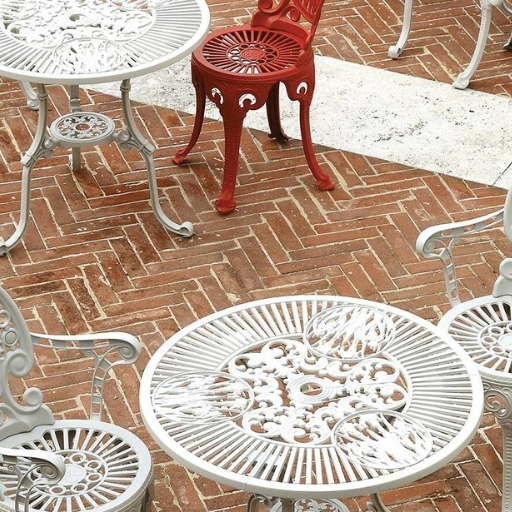
This type of metal, which has been used since the first ages when humanity began to produce tools, can be used to create a rustic style in garden furniture. Production with this material requires a high level of craftsmanship and is generally used in handmade special designs in garden furniture. Garden furniture produced with this material is durable, robust, and resistant to wind, but at the same time, it is more prone to rusting, difficult to carry, and requires more maintenance.
Synthetic Materials
Synthetic materials are a popular choice for outdoor furniture because they are generally weather-resistant and require low maintenance. Below, we will examine synthetic materials commonly used in garden furniture:
Resin
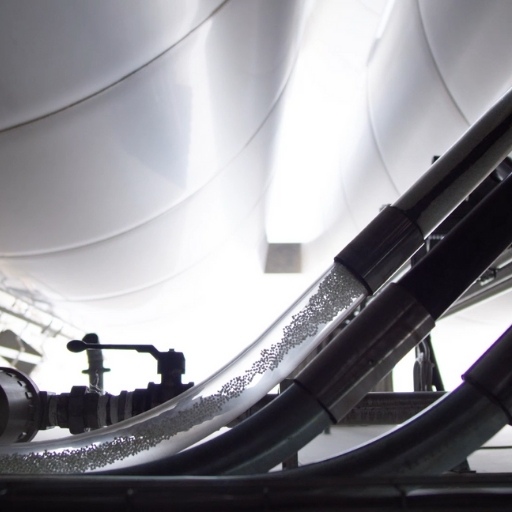
Man-made materials such as synthetic resin and plastic have become trendy in garden furniture in recent years. The Italian company Nardi in particular skillfully uses this material and is a popular brand in garden furniture. It represents the highest quality with UV-added homogeneous colored fiberglass polypropylene resins.
In recent years, synthetic resins have begun to replace natural materials such as reed, rattan, and bamboo in garden furniture. This is because high-quality resins are more robust and more resistant to adverse weather conditions than these natural materials. It is also a more environmentally friendly choice. Synthetic resins do not release any chemicals into the environment and do not wear out even if exposed to sunlight for decades. Weaves that look and feel just like natural materials such as rattan and bamboo are produced from these resins. Brands like Dedon that have proven their quality have mastered this detail, and it is impossible to distinguish their weaves from natural material. They produce garden furniture that is durable and light, which you can use for many years, by building these weaves on the highest quality aluminums.
When examining resin garden furniture, you need to make sure it does not contain polyvinyl chloride, or PVC as we know it, which is a much lower quality equivalent. PVC is not durable and is not resistant to the sun.
High Pressure Laminate (HPL)
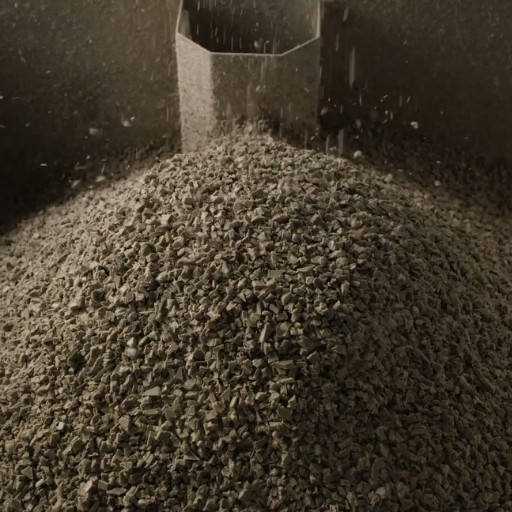
HPL is a material created by compressing a resin layer in several layers. Therefore, HPL furniture is very durable and resistant to scratches, stains, and weather conditions. Additionally, HPL furniture is generally UV-protected, making it resistant to fading. Also, HPL furniture is water-resistant, and HPL breathes better than other options, providing more comfortable use in hot weather. Moreover, they can be easily cleaned with mild soap and water. When all these features come together, HPL forms an excellent choice for versatile textile products such as garden furniture cushions, decorative pillows, and umbrellas.
Plastics
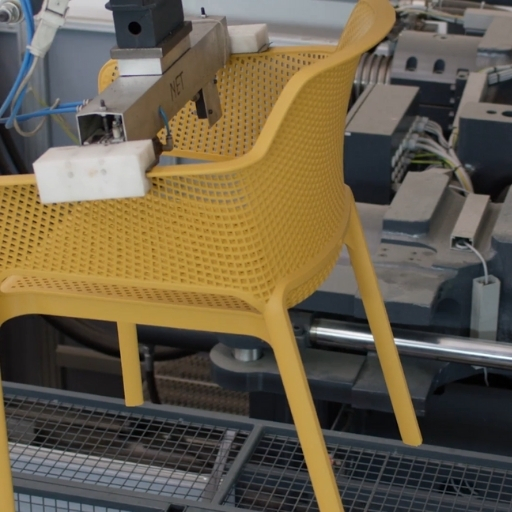
Apart from resin and high-pressure laminate, there are different types of plastics used in garden furniture. First, polypropylene (PP) is lightweight and extremely resistant to heat. Polycarbonate (PC) is a material that is resistant to impacts thanks to its hardness, which is generally used in transparent-looking garden furniture, but is not resistant to scratching. Polymethyl Methacrylate (PMMA) is an inexpensive alternative to polycarbonate; although not as durable, it still provides a transparent appearance.
Foams
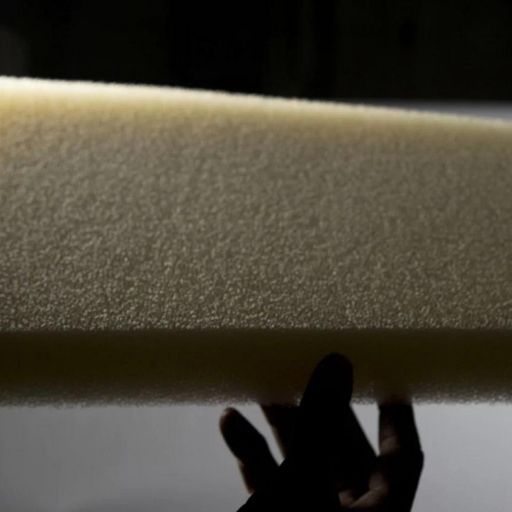
Foams used in garden furniture cushions are resistant to water and adverse weather conditions, unlike sponges used in indoor cushions. Closed-cell foams, which are widely used in boat seats and life jackets, are the most efficient option. These foams repel water and are produced with materials such as polypropylene, polyethylene, neoprene, and polystyrene. Polyethylene terephthalate (PET) foams produced with recycling are also preferred in garden furniture due to their fast drying and resistance to moisture. Polyester foams are also a cheap alternative to other types. They dry relatively quickly and are easy to clean. The least efficient type of foam is polyurethane foam. They absorb water and dry slowly. They are also flammable unless covered with an extra plastic layer.
Fabrics
Fabrics used in garden furniture are generally synthetic because natural fabrics are not suitable for the harsh conditions of outdoor spaces. For example, acrylic fabrics are ideal for outdoor furniture due to their quick-drying properties. Acrylic fabrics produced by brands such as Sunbrella® do not fade as a result of exposure to sunlight because they have UV resistance. In addition, other synthetic fabrics such as olefin and polyester are widely used in outdoor furniture because they are water-resistant and easy to clean.
Fabrics produced from synthetic materials provide long-term durability and require low maintenance when used in garden furniture. These materials are suitable for outdoor use as they are resistant to weather conditions.
Sunbrella®
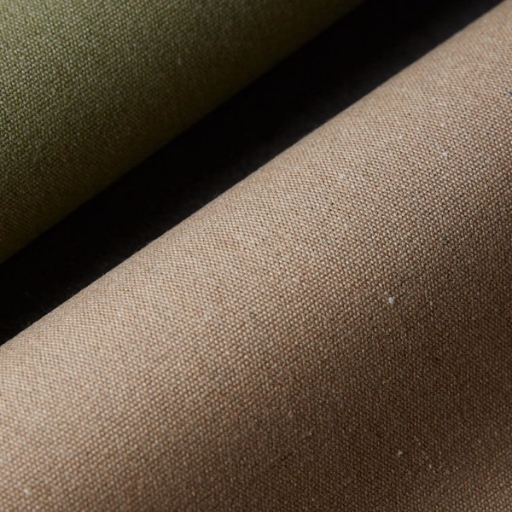
Sunbrella® has created a revolution in acrylic outdoor textiles. It has brought the softness we know from indoor textiles to outdoor textiles and made this softness resistant to the harshest weather conditions. These fabrics, which stand out with their resistance to all liquids, including salt water, are widely used in yachts and catamarans as well as garden furniture. We would like to point out that as ICA Home & Garden, we are the Turkish distributor of the Sunbrella brand in the industrial textile sector. We offer you this technology and quality both in garden furniture and in industrial textiles.
Acrylic Fabrics
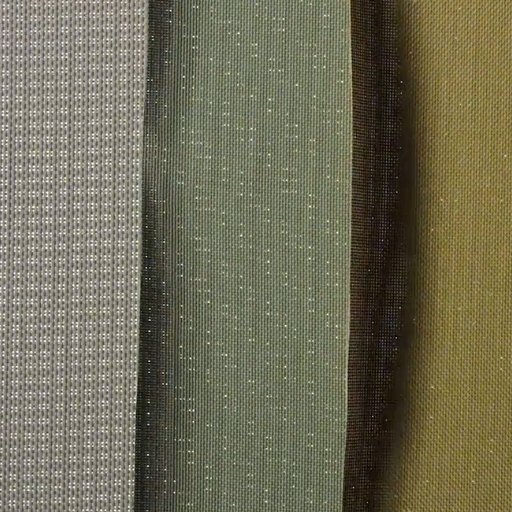
Outdoor fabrics made from acrylic fibers are extremely durable and resistant to both weather conditions and heavy use. They are resistant to mold and mildew formation and are long-lasting against tearing. Acrylic fabrics are solution-dyed, meaning the yarns are colored before they are woven. This feature ensures that the fabric retains its color for a long time even when exposed to sunlight. Moreover, they are water-resistant, and acrylic fabrics breathe better than other options, providing more comfortable use in hot weather. Plus, they can be easily cleaned with mild soap and water. When all these features come together, acrylic fabrics form an excellent choice for versatile textile products such as garden furniture cushions, decorative pillows, and umbrellas.
Concrete and Concrete Composites
Concrete and concrete composites are popular materials used in the construction of durable garden furniture. These materials offer a modern style while also having a solid structure. They are resistant to weather conditions, UV rays, and abrasion. Therefore, concrete furniture is long-lasting and can be used for years.
Concrete furniture offers a modern style and adds a sophisticated look to the outdoor area. The natural gray color of concrete creates a great contrast with light-colored garden furniture.
Garden furniture produced from these materials is resistant to wind because it is heavy and does not easily move from its place. Their weight provides resistance to wind, but they are very difficult to move from one place to another.
In addition to the concrete we know, concrete composites also offer the advantages of concrete while having some additional features. For example, polymer concrete is produced by adding plastic additives to concrete and has a lighter structure. In this way, garden furniture reflects the elegance of concrete while also gaining portability.
Concrete and concrete composites are excellent options that enhance the durability and aesthetics of outdoor furniture. However, considering their weight and hardness, they can be difficult to move. But as an advantage, it should be remembered that these materials do not require regular maintenance.
Garden Furniture Maintenance
Many garden furniture made from the materials we mentioned above require a special maintenance routine. Especially garden furniture made of natural woods like Teak requires at least annual maintenance. If you are looking for a guide on garden furniture maintenance, you can use our blog post.
With all the information we have provided, you will be able to make the right choice for your garden, considering the advantages or disadvantages of garden furniture materials, with this material guide we have presented. If you are still undecided about material and furniture selection, you can contact us for support on model selection.